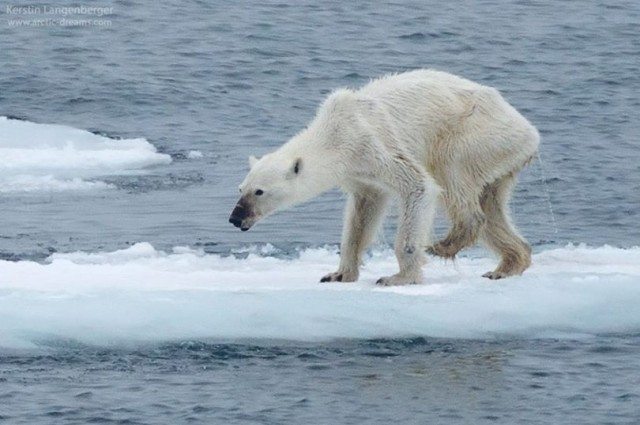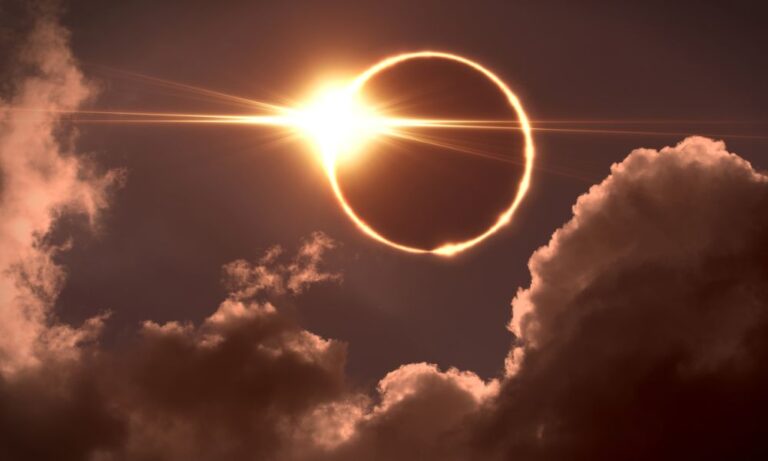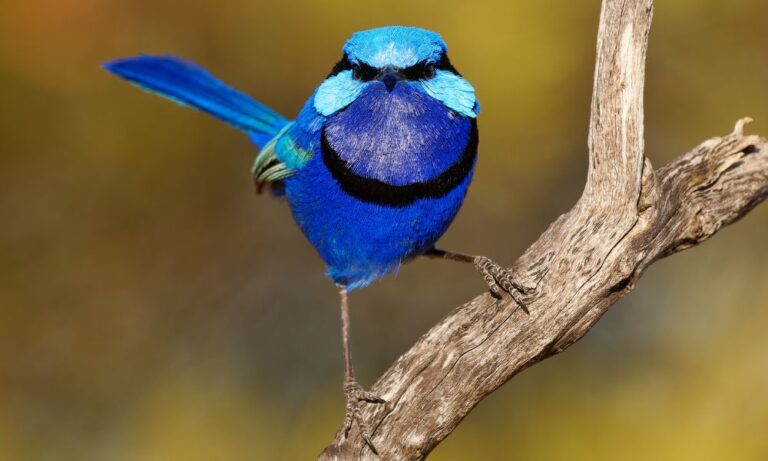Earlier this year we reported on the how polar bears in the arctic were dealing with climate change in a way that was differing from how researchers imagined they would adapt.
The study of more than two dozen bears in the Beaufort Sea, north of Alaska, showed that the bears didn’t slow down in the summer seasons, or enter a hibernating state – they starved.
Now, an image circulating the internet has sparked new debate on how climate change is affecting our polar bear population.
The photo, taken by photographer Kerstin Langenberger in Svalbard, Norway, depicts an emaciated polar bear seemingly starving to death.
Langenberger released a statement that went along side the image, claiming that whilst scientists say the Svalbard bear population is stable – this is not the case.
“I see the glaciers caving, retreating dozens to hundreds of meters every year. I see the pack ice disappearing in record speed. Yes, I have seen bears in good shape – but I have also seen dead and starving polar bears. Bears walking on the shores, looking for food, bears trying to hunt reindeer, eating birds’ eggs, moss and seaweed. And I realised that the fat bears are nearly exclusively males which stay on the pack ice all year long. The females, on the other hand, which den on land to give birth to their young, Are often slim. With the pack ice retreating further and further north every year, they tend to be stuck on land where there’s not much food.”
In the same area, scientists observed a starving polar bear eating a dolphin and burying the leftovers for later. This out-of-character display, showed researchers how the Svalbard populations of polar bears were adapting to a lack of food.
The Arctic predators, whose species depend on the increasingly lessening amounts of sea ice to catch their pray, have seen a significant decrease in numbers over the years.
According to Polar Bears International, fewer than 25,000 bears are left in the wild, with their population dropping around 40 percent between 2001 and 2010.
The species is currently considered vulnerable, featuring on the IUCN red list, due to the belief that their population has declined over the past 45 years. The reason behind this decline is mainly due to loss of habitat.
“Global climate change possesses a substantial threat to the habitat of polar bears. Recent modeling of the trends for sea ice extent, thickness and timing of coverage predicts dramatic reductions in sea ice coverage over the next 50-100 years,” says a spokesperson for IUCN.
Whilst there are too many variables for this image to be conclusively labeled ‘the face of climate change’, the fact of the matter is that, sea ice is melting and polar bears are having to find alternative means of sustenance because of it. But is it enough to save them?







